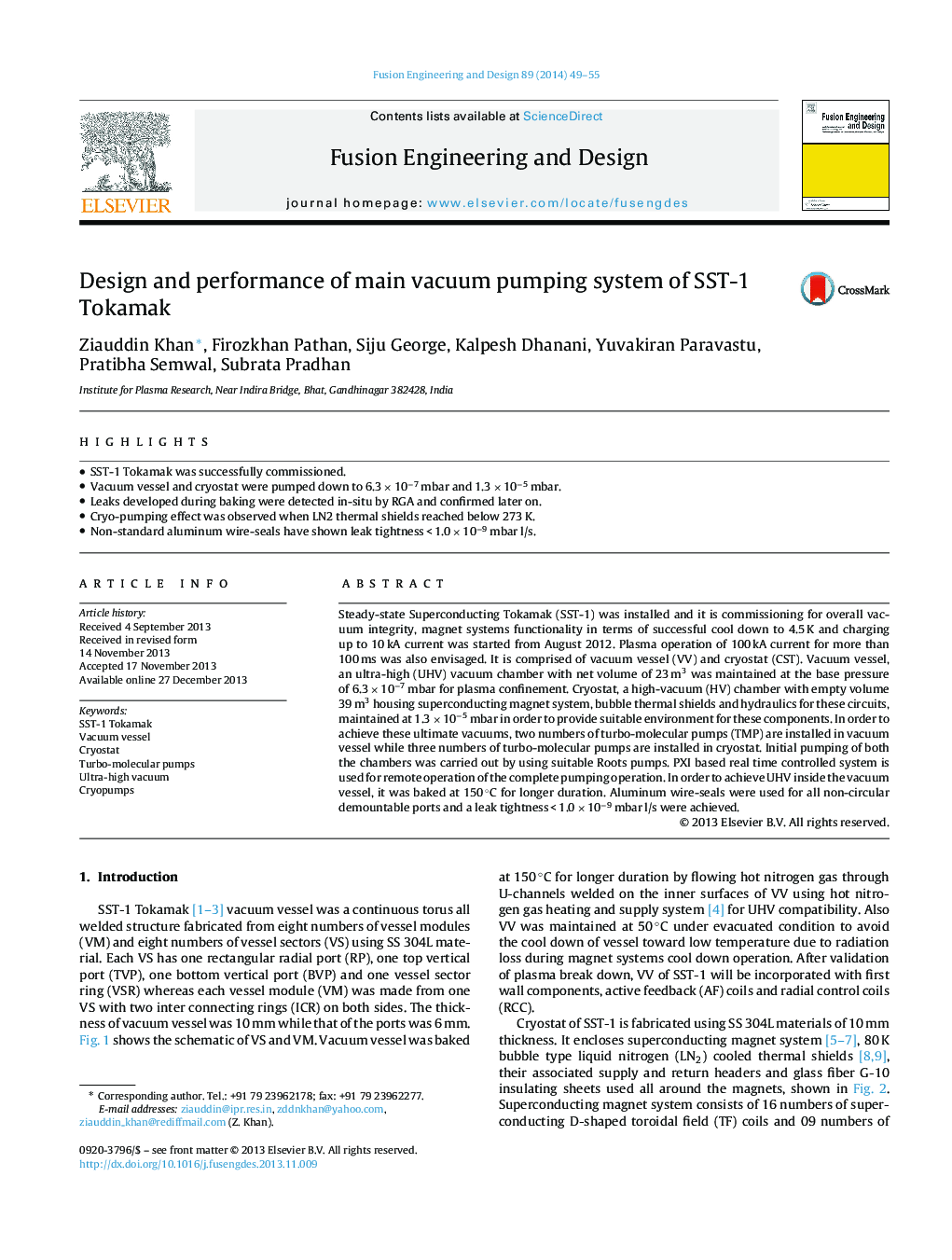| Article ID | Journal | Published Year | Pages | File Type |
|---|---|---|---|---|
| 271641 | Fusion Engineering and Design | 2014 | 7 Pages |
•SST-1 Tokamak was successfully commissioned.•Vacuum vessel and cryostat were pumped down to 6.3 × 10−7 mbar and 1.3 × 10−5 mbar.•Leaks developed during baking were detected in-situ by RGA and confirmed later on.•Cryo-pumping effect was observed when LN2 thermal shields reached below 273 K.•Non-standard aluminum wire-seals have shown leak tightness < 1.0 × 10−9 mbar l/s.
Steady-state Superconducting Tokamak (SST-1) was installed and it is commissioning for overall vacuum integrity, magnet systems functionality in terms of successful cool down to 4.5 K and charging up to 10 kA current was started from August 2012. Plasma operation of 100 kA current for more than 100 ms was also envisaged. It is comprised of vacuum vessel (VV) and cryostat (CST). Vacuum vessel, an ultra-high (UHV) vacuum chamber with net volume of 23 m3 was maintained at the base pressure of 6.3 × 10−7 mbar for plasma confinement. Cryostat, a high-vacuum (HV) chamber with empty volume 39 m3 housing superconducting magnet system, bubble thermal shields and hydraulics for these circuits, maintained at 1.3 × 10−5 mbar in order to provide suitable environment for these components. In order to achieve these ultimate vacuums, two numbers of turbo-molecular pumps (TMP) are installed in vacuum vessel while three numbers of turbo-molecular pumps are installed in cryostat. Initial pumping of both the chambers was carried out by using suitable Roots pumps. PXI based real time controlled system is used for remote operation of the complete pumping operation. In order to achieve UHV inside the vacuum vessel, it was baked at 150 °C for longer duration. Aluminum wire-seals were used for all non-circular demountable ports and a leak tightness < 1.0 × 10−9 mbar l/s were achieved.
